Smartphone and Tablet-Based Sensing of Environmental Radioactivity: Mobile Low-Cost Measurements for Monitoring, Citizen Science, and Educational Purposes
Abstract
1. Introduction
2. Materials and Methods
2.1. DIY Particle Detector
2.2. Hybrid Pixel Detector
3. Results
3.1. Energy Calibration of the DIY Particle Detector
3.2. Experiments on Airborne Radon Isotopes
3.3. Experiments on Edible Potassium Salt
3.4. Experiments on Radioactivity from Natural Uranium and Its Isotopes
4. Discussion
- 1)
- Insight into the ubiquitous nature of radioactivity occurring also in our natural environment (see Table 1). Regarding health and safety issues is not only the answer to the question of dose (how much radiation?) decisive, but rather a deeper understanding about different particle types and their nuclear physics properties (what kind of radiation?).
- 2)
- Experiential learning concerning common confusions and misconceptions about radiation and radioactivity, such as (i) the “non-naturalness” idea that all radiation and radioactivity is artificial ([37], see also see point 1) above); (ii) the “contamination” idea that irradiation of food or a person, e.g., by X-rays, results in radioactive contamination [38,39,40].
- 3)
- Taking into account evidence from science education research about science contexts interesting for young people of high school age. Physics is meeting notoriously low interest among high-school students, in particular among girls [41]. However, the very same physics content can be perceived with very different interest, depending on the kind of context (i.e., area of application) it is linked with. Biomedical applications belong to the context establishing the highest interest among girls, much higher than technological applications: e.g., for the content of hydrostatic pressure the heart as “blood pump” versus a pump to extract petrol from great depths; for boys interest in both contexts is similar and rather high [42,43]. Empirical evidence for the effectiveness of interventions of taking account of these findings has been provided, e.g., by [44,45]. Using smartphone and tablet-based sensing of environmental radioactivity offers such a biomedical context and measuring properties of -particles in particular provides links to the physics of modern hadron therapy used in treatment of cancer. Moreover being of high environmental and societal importance, another factor supporting physics interest among girls [43]. Another topic shown to be of very high interest for secondary level students is astronomy and astrophysics [46]. Within the last five years, it was also explored with the help of smartphones, from a basic [47] to research level [7,8]. This further underlines potential and perspectives of using mobile sensors beyond biomedical applications.
Author Contributions
Funding
Acknowledgments
Conflicts of Interest
References
- Bacon, M.E. A comparison of electrostatic and filtered air collection of radon progeny. Eur. J. Phys. 2004, 25, 239–248. [Google Scholar] [CrossRef][Green Version]
- Brown, A.; Franken, P.; Bonner, S.; Dolezal, N.; Moross, J. Safecast: Successful citizen-science for radiation measurement and communication after Fukushima. J. Radiol. Prot. 2016, 36, S82–S101. [Google Scholar] [CrossRef] [PubMed]
- Eijkelhof, H.M.C. Radiation and Risk in Physics Education. Ph.D. Thesis, University of Utrecht, Utrecht, The Netherlands, 1990. [Google Scholar]
- Ballabriga, R.; Campbell, M.; Llopart, X. Asic developments for radiation imaging applications: The medipix and timepix family. Nucl. Instr. Meth. A 2018, 878, 10–23. [Google Scholar] [CrossRef]
- Kuhn, J.; Molz, A.; Gröber, S.; Frübis, J. iRadioactivity–Possibilities and Limitations for Using Smartphones and Tablet PCs as Radioactive Counters: Examples for Studying Different Radioactive Principles in Physics Education. Phys. Teach. 2014, 52, 351–356. [Google Scholar] [CrossRef]
- Van Hoey, O.; Salavrakos, A.; Marques, A.; Nagao, A.; Willems, R.; Vanhavere, F.; Cauwels, V.; Nascimento, L.F. Radiation dosimetry properties of smartphone CMOS sensors. Radiat. Prot. Dosim. 2016, 168, 314–321. [Google Scholar] [CrossRef] [PubMed]
- Vandenbroucke, J.; BenZvi, S.; Bravo, S.; Jensen, K.; Karn, P.; Meehan, M.; Peacock, J.; Plewa, M.; Ruggles, T.; Santander, M.; et al. Measurement of cosmic-ray muons with the Distributed Electronic Cosmic-ray Observatory, a network of smartphones. J. Inst. 2016, 11, P04019. [Google Scholar] [CrossRef]
- Whiteson, D.; Mulhearn, M.; Shimmin, C.; Cranmer, K.; Brodie, K.; Burns, D. Searching for ultra-high energy cosmic rays with smartphones. Astropart. Phys. 2016, 79, 1–9. [Google Scholar] [CrossRef][Green Version]
- Igoe, D.P.; Parisi, A.V.; Amar, A.; Rummenie, K.J. Median filters as a tool to determine dark noise thresholds in high resolution smartphone image sensors for scientific imaging. Rev. Sci. Instrum. 2018, 89, 015003. [Google Scholar] [CrossRef]
- Burggraaff, O.; Schmidt, N.; Zamorano, J.; Pauly, K.; Pascual, S.; Tapia, C.; Spyrakos, E.; Snik, F. Standardized spectral and radiometric calibration of consumer cameras. Opt. Express 2019, 27, 19075–19101. [Google Scholar] [CrossRef]
- Leroy, C.; Rancoita, P.G. Principles of Radiation Interaction in Matter And Detection, 3rd ed.; World Scientific Publishing Company: Singapore, 2012. [Google Scholar]
- Berger, M.; Coursey, J.; Zucker, M.; Chang, J. Stopping-Power & Range Tables for Electrons, Protons, and Helium Ions; NIST Standard Reference Database, NISTIR 4999, Volume 124; NIST: Gaithersburg, MD, USA, 2017. [Google Scholar]
- Hubbell, J.; Seltzer, S. X-Ray Mass Attenuation Coefficients; NIST Standard Reference Database, NISTIR 5632, Volume 126; NIST: Gaithersburg, MD, USA, 2004. [Google Scholar]
- Osram. BPX61 Silicon PIN Photodiode; Datasheet; OSRAM Opto Semiconductors GmbH: Regensburg, Germany, 2019. [Google Scholar]
- Dousse, J.C.; Rhême, C. The Si photodiode: An inexpensive though high-performing α detector. Am. J. Phys. 1983, 51, 452–455. [Google Scholar] [CrossRef]
- Becker, J. Radioaktivitätsmesser im Miniformat. Funkschau 1986, 21, 63–69. [Google Scholar]
- Ishigaki, Y.; Matsumoto, Y.; Ichimiya, R.; Tanaka, K. Development of Mobile Radiation Monitoring System Utilizing Smartphone and Its Field Tests in Fukushima. IEEE Sens. J. 2013, 13, 3520–3526. [Google Scholar] [CrossRef]
- Osram; Vishay. BPW34 Silicon PIN Photodiode; Datasheet; OSRAM Opto Semiconductors GmbH: Regensburg, Germany; VISHAY Intertechnology, Inc.: Malvern, PA, USA, 2011. [Google Scholar]
- Laquai, B. Open Geiger citizen science project. Available online: www.opengeiger.de (accessed on 3 September 2019).
- Ravotti, F.; Glaser, M.; Moll, M.; Saigne, F. BPW34 Commercial p-i-n Diodes for High-Level 1-MeV Neutron Equivalent Fluence Monitoring. IEEE Trans. Nucl. Sci. 2008, 55, 2133–2140. [Google Scholar] [CrossRef]
- Bayhan, H.; Özden, Ş. Frequency dependence of junction capacitance of BPW34 and BPW41 p-i-n photodiodes. Pramana 2007, 68, 701–706. [Google Scholar] [CrossRef]
- Keller, O. DIY Particle Detector: Initial Release. Zenodo; Zenodo: Geneva, Switzerland, 2019; Project homepage: http://www.github.com/ozel/DIY_particle_detector. [Google Scholar] [CrossRef]
- Keller, O. DIY Particle Detector: Reference Measurement Data. Zenodo; Zenodo: Geneva, Switzerland, 2019. [Google Scholar] [CrossRef]
- Llopart, X.; Ballabriga, R.; Campbell, M.; Tlustos, L.; Wong, W. Timepix, a 65k programmable pixel readout chip for arrival time, energy and/or photon counting measurements. Nucl. Instr. Meth. A 2007, 581, 485–494. [Google Scholar] [CrossRef]
- Keller, O.M. Visualisation of Radioactivity in Real-Time on a Tablet Measured by a Hybrid Pixel Detector. Master’s Thesis, Karlsruhe University of Applied Sciences, Karlsruhe, Germany, 2015. [Google Scholar]
- Kroupa, M.; Campbell-Ricketts, T.; Bahadori, A.; Empl, A. Techniques for precise energy calibration of particle pixel detectors. Rev. Sci. Instrum 2017, 88, 033301. [Google Scholar] [CrossRef] [PubMed]
- Keller, O.; Schmeling, S.; Müller, A.; Benoit, M. iPadPix—A novel educational tool to visualise radioactivity measured by a hybrid pixel detector. J. Inst. 2016, 11, C11032. [Google Scholar] [CrossRef]
- Siiskonen, T.; Pöllänen, R. Advanced simulation code for alpha spectrometry. Nucl. Instr. Meth. A 2005, 550, 425–434. [Google Scholar] [CrossRef]
- Gilmore, G. Practical Gamma-Ray Spectroscopy, 2nd ed.; Wiley: West Sussex, England, 2008. [Google Scholar]
- Austen, D.; Brouwer, W. Radioactive balloons: Experiments on radon concentration in schools or homes. Phys. Educ. 1997, 32, 97. [Google Scholar] [CrossRef]
- Samat, S.B.; Green, S.; Beddoe, A.H. The activity of one gram of potassium. Phys. Med. Biol. 1997, 42, 407–413. [Google Scholar] [CrossRef]
- Spannagel, S.; Wolters, K.; Hynds, D.; Alipour Tehrani, N.; Benoit, M.; Dannheim, D.; Gauvin, N.; Nürnberg, A.; Schütze, P.; Vicente, M. Allpix2: A modular simulation framework for silicon detectors. Nucl. Instr. Meth. A 2018, 901, 164–172. [Google Scholar] [CrossRef]
- Wibig, T.; Kołodziejczak, K.; Pierzyński, R.; Sobczak, R. Educational studies of cosmic rays with a telescope of Geiger–Müller counters. Phys. Educ. 2006, 41, 542–545. [Google Scholar] [CrossRef]
- Silva, M.C.; Vilela, D.C.; Migoto, V.G.; Gomes, M.P.; Martin, I.M.; Germano, J.S.E. Ionizing radiation measurements using low cost instruments for teaching in college or high-school in Brazil. Phys. Educ. 2017, 52, 064004. [Google Scholar] [CrossRef]
- Dunne, P.; Costich, D.; O’Sullivan, S. Measurement of the mean lifetime of cosmic ray muons in the A-level laboratory. Phys. Educ. 1998, 33, 296–302. [Google Scholar] [CrossRef]
- Dunne, P.; Miller, A. Investigating cosmic ray coincidences. Phys. Educ. 2001, 36, 322–326. [Google Scholar] [CrossRef]
- Neumann, S.; Hopf, M. Students’ Conceptions About ’Radiation’: Results from an Explorative Interview Study of 9th Grade Students. J. Sci. Educ. Tech. 2012, 21, 826–834. [Google Scholar] [CrossRef]
- Kaczmarek, R.; Bednarek, D.R.; Wong, R. Misconceptions of medical students about radiological physics. Health Phys. 1987, 52, 106–107. [Google Scholar]
- Millar, R.; Gill, J.S. School students’ understanding of processes involving radioactive substances and ionizing radiation. Phys. Educ. 1996, 31, 27–33. [Google Scholar] [CrossRef]
- Prather, E.E.; Harrington, R.R. Student Understanding of Ionizing Radiation and Radioactivity: Recognizing the Differences Between Irradiation and Contamination. J. Coll. Sci. Teach. 2001, 31, 89–93. [Google Scholar]
- Barmby, P.; Defty, N. Secondary school pupils’ perceptions of physics. Res. Sci. Technol. Educ. 2006, 24, 199–215. [Google Scholar] [CrossRef]
- Hoffmann, L. Promoting girls’ interest and achievement in physics classes for beginners. Learn. Instr. 2002, 12, 447–465. [Google Scholar] [CrossRef]
- Häussler, P.; Hoffman, L.; Langeheine, R.; Rost, J.; Sievers, K. A typology of students’ interest in physics and the distribution of gender and age within each type. Int. J. Sci. Educ. 1998, 20, 223–238. [Google Scholar] [CrossRef]
- Wiesner, H.; Colicchia, G. Improving students interest—Medical and biological contexts in physics education. In Physics Curriculum Design, Development and Validation GIREP 2008 International Conference: Selected Papers; Department of Educational Sciences, University of Cyprus: Nicosia, Cyprus, 2008. [Google Scholar]
- Reiss, M.; Hoyles, C.; Mujtaba, T.; Riazi-Farzad, B.; Rodd, M.; Simon, S.; Stylianidou, F. Understanding Participation Rates in Post-16 Mathematics and Physics: Conceptualising and Operationalising the UPMAP Project. Int. J. Sci. Math. Educ. 2011, 9, 273–302. [Google Scholar] [CrossRef]
- Sjøberg, S.; Schreiner, C. The ROSE Project—An Overview and Key Findings; Technical Report; University of Oslo: Oslo, Norway, 2010. [Google Scholar]
- Meißner, M.; Haertig, H. Smartphone astronomy. Phys. Teach. 2014, 52, 440–441. [Google Scholar] [CrossRef]
- Bottollier-Depois, J.F.; Allain, E.; Baumont, G.; Berthelot, N.; Clairand, I.; Couvez, C.; Darley, G.; Henry, B.; Jolivet, T.; Laroche, P.; et al. OPEN RADIATION: A collaborative project for radioactivity measurement in the environment by the public. EPJ Web Conf. 2017, 153, 08002. [Google Scholar] [CrossRef]
- Feldhoff, T. Visual Representations of Radiation Risk and the Question of Public (Mis-)Trust in Post-Fukushima Japan. Societies 2018, 8, 1–20. [Google Scholar] [CrossRef]
- Beser, A.M. How Citizen Science Changed the Way Fukushima Radiation is Reported. National Geographic Society Newsroom, 13 February 2016. [Google Scholar]
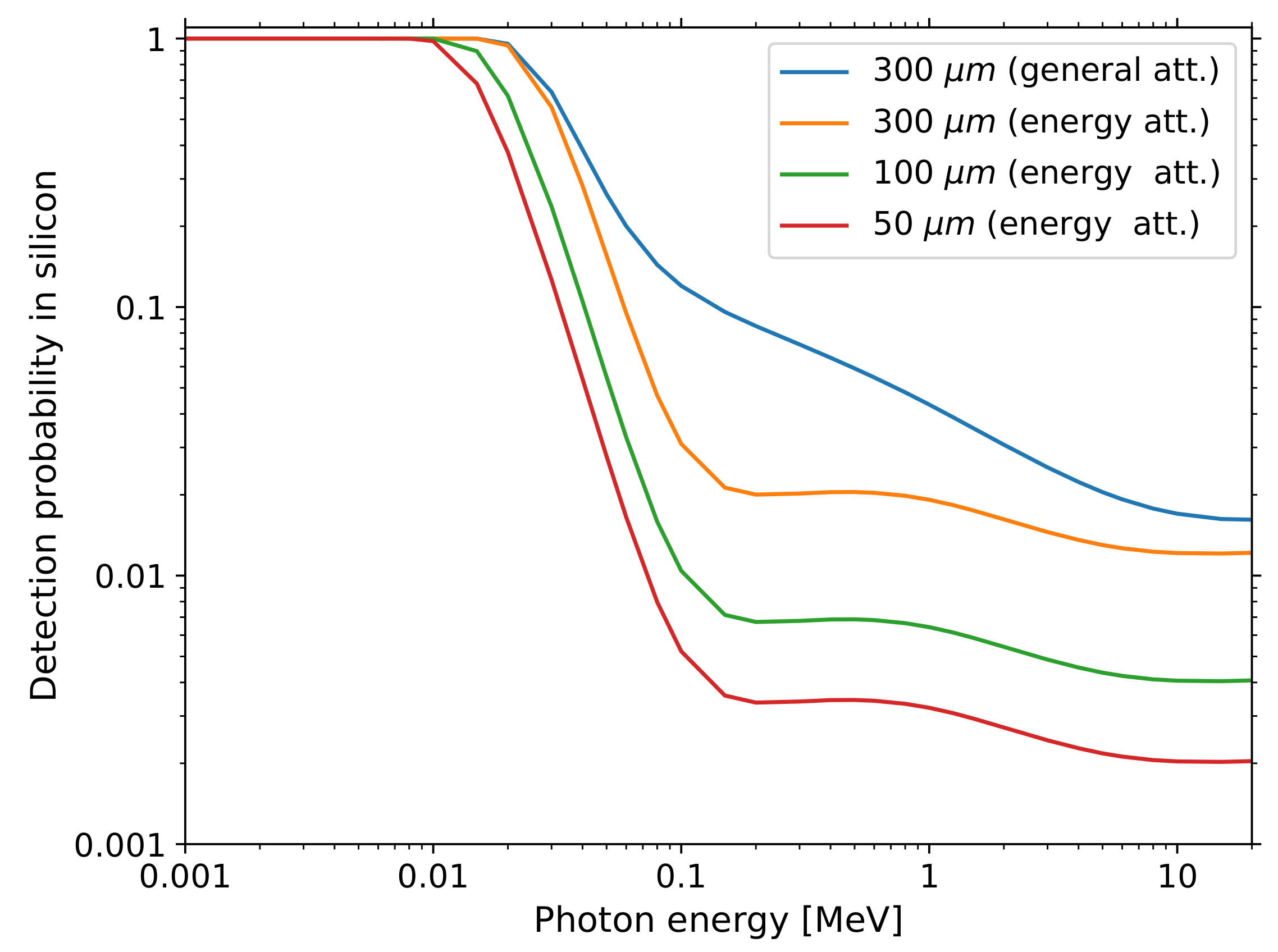
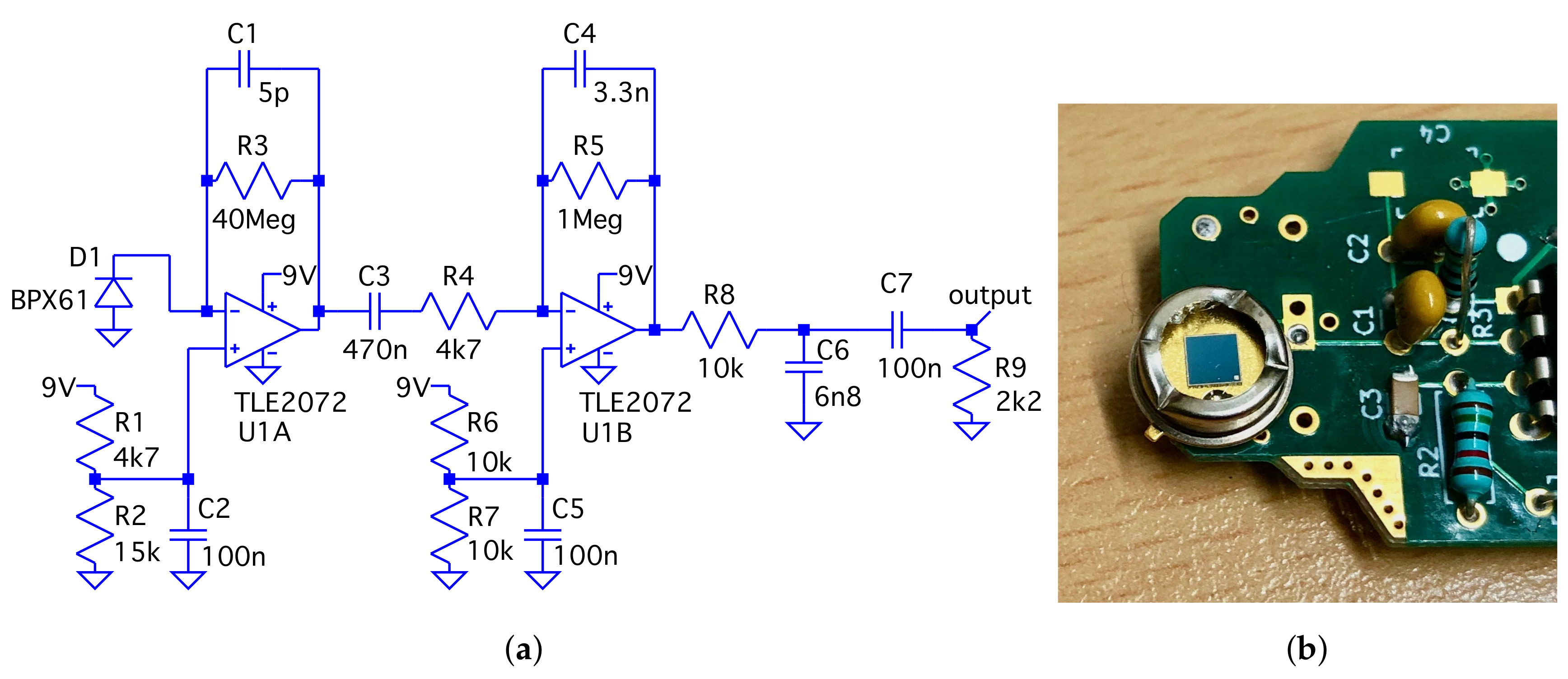
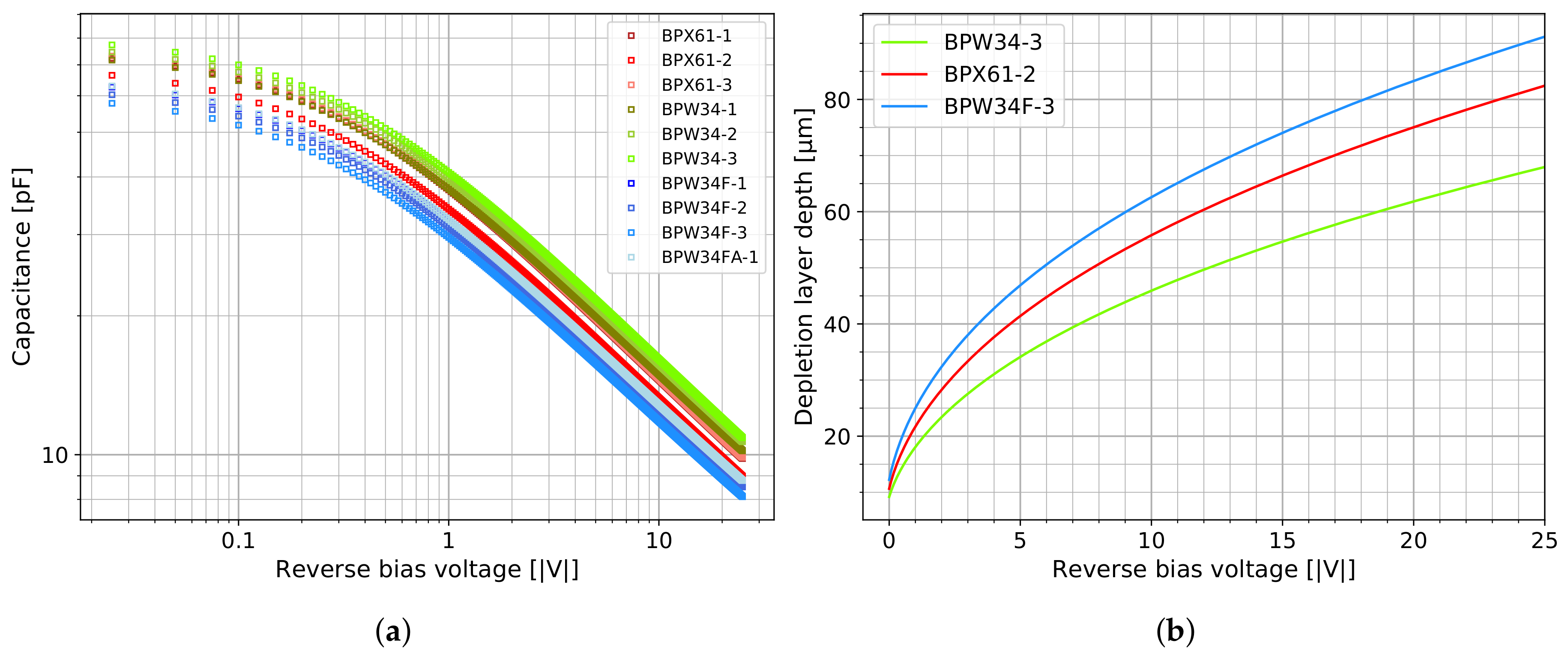
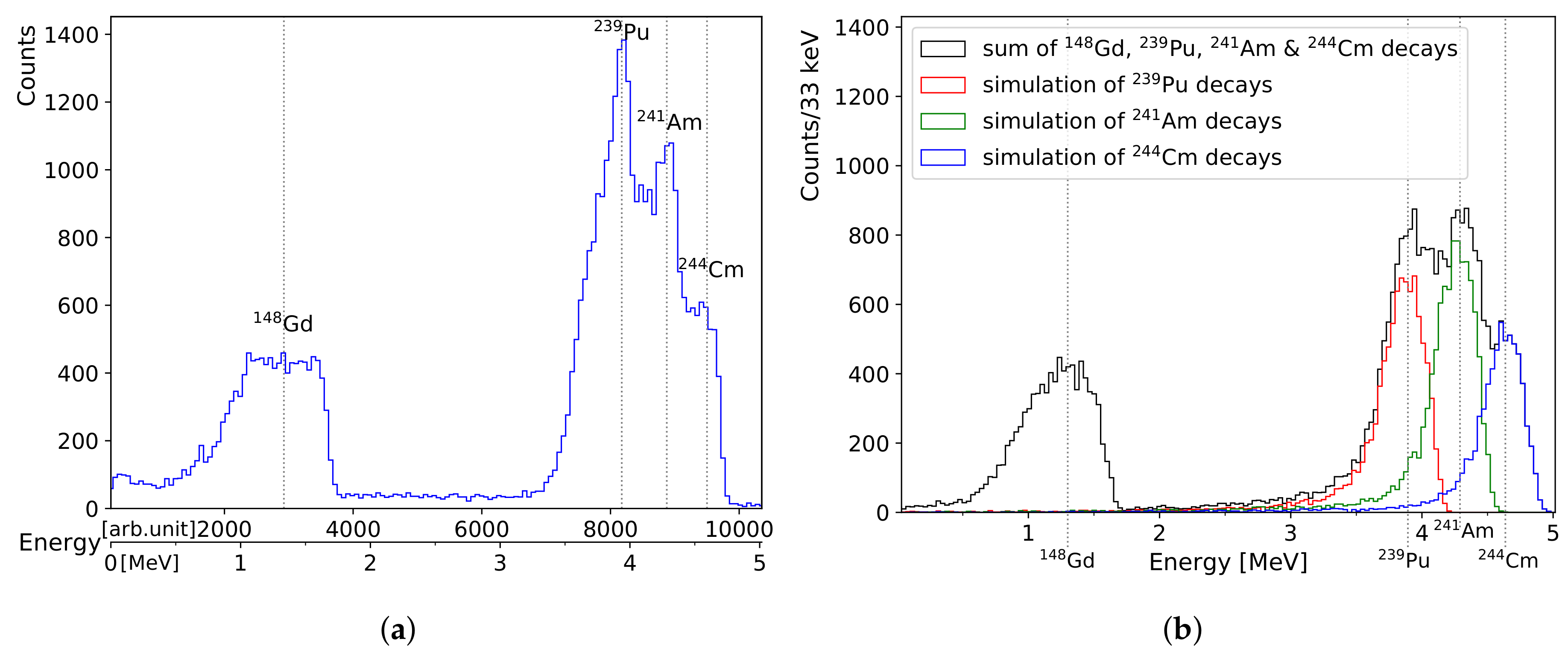
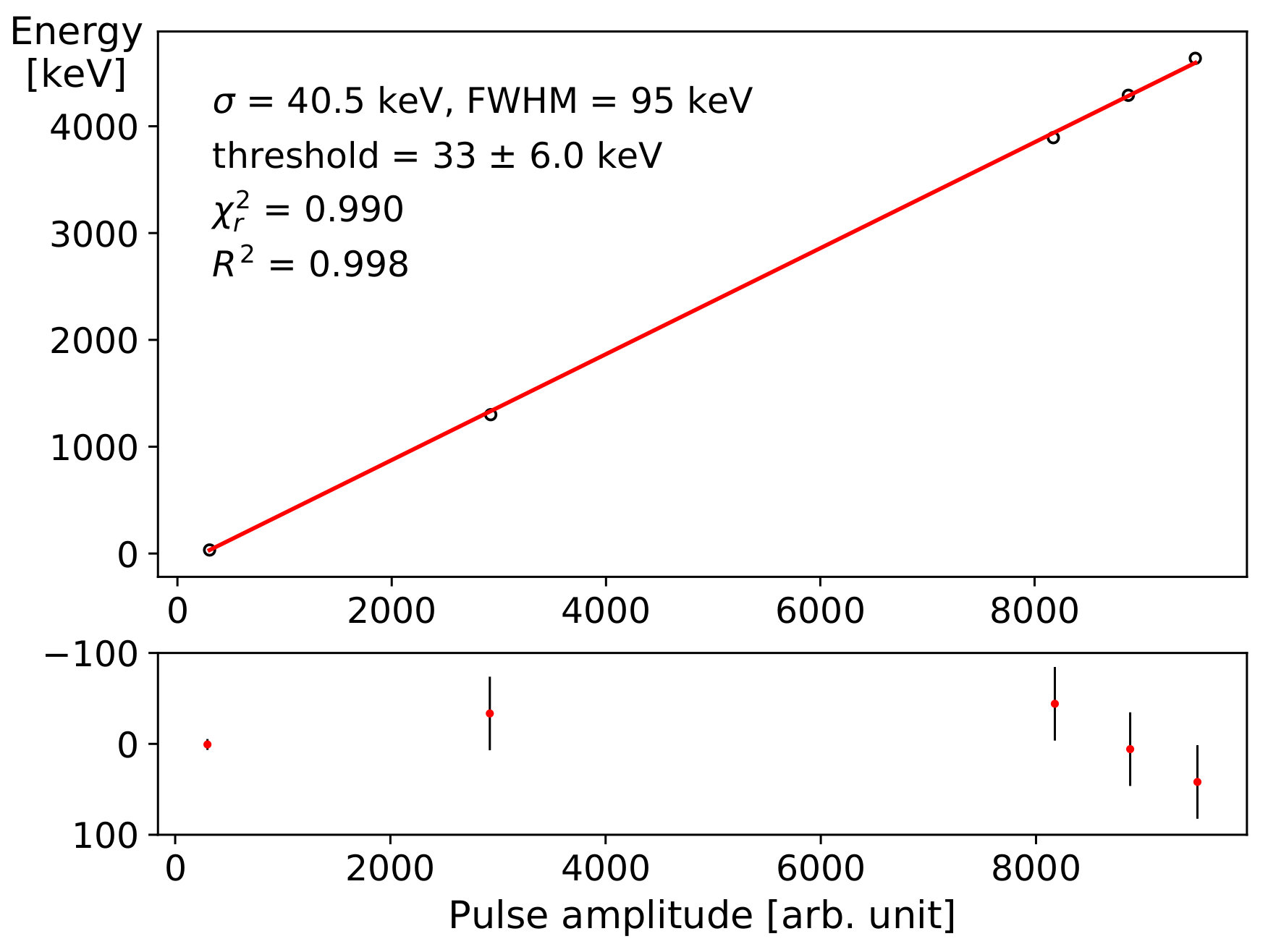
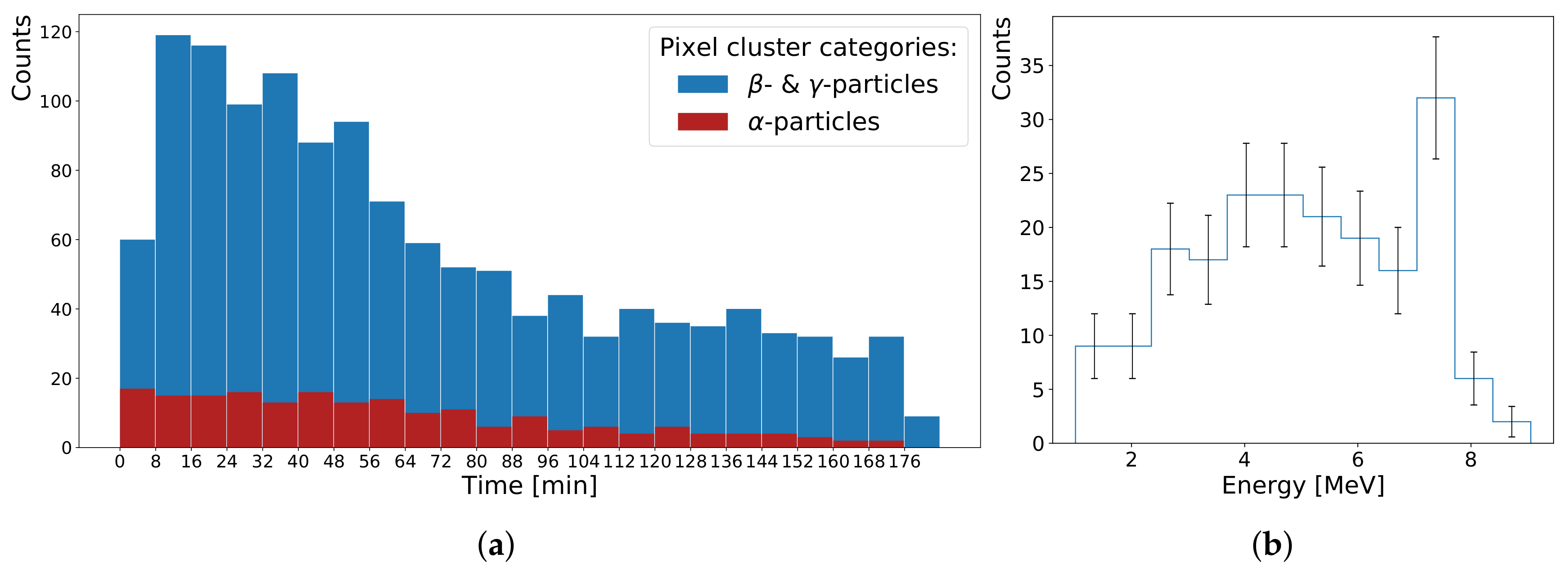
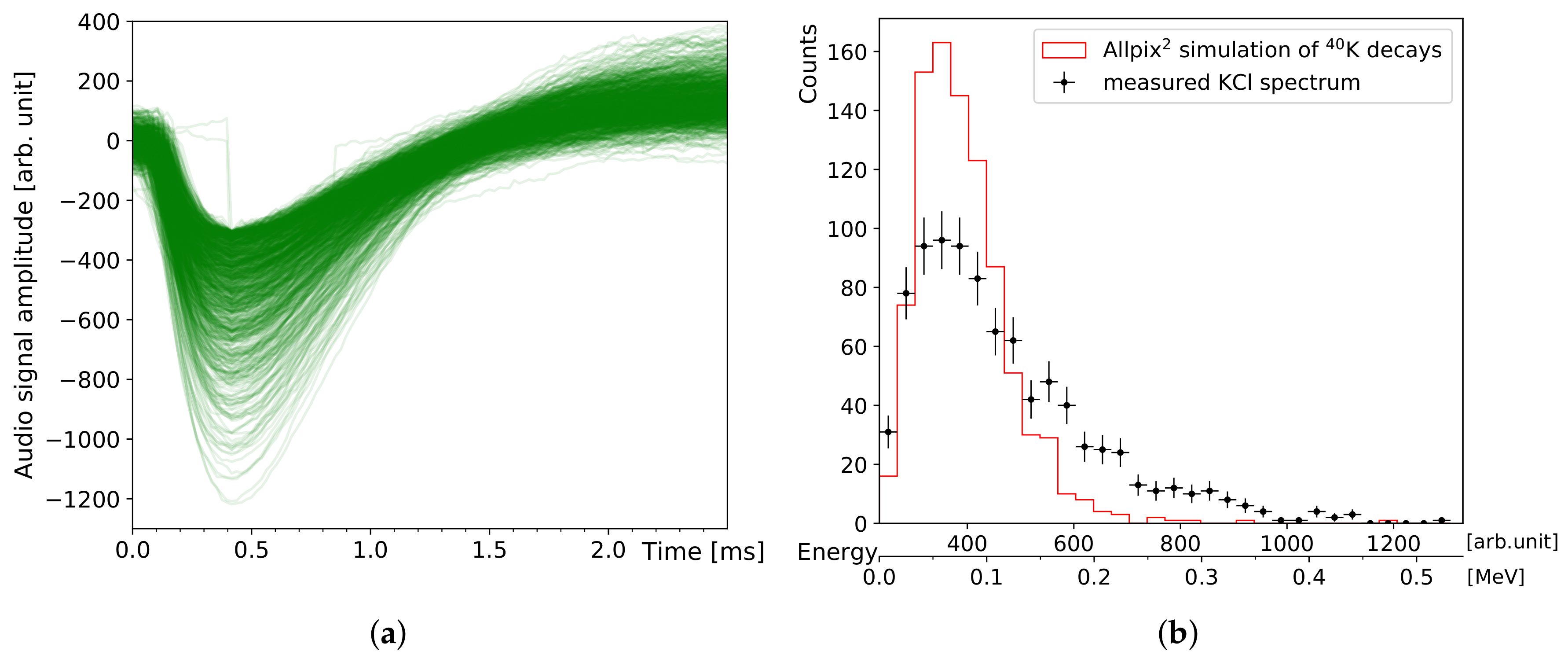
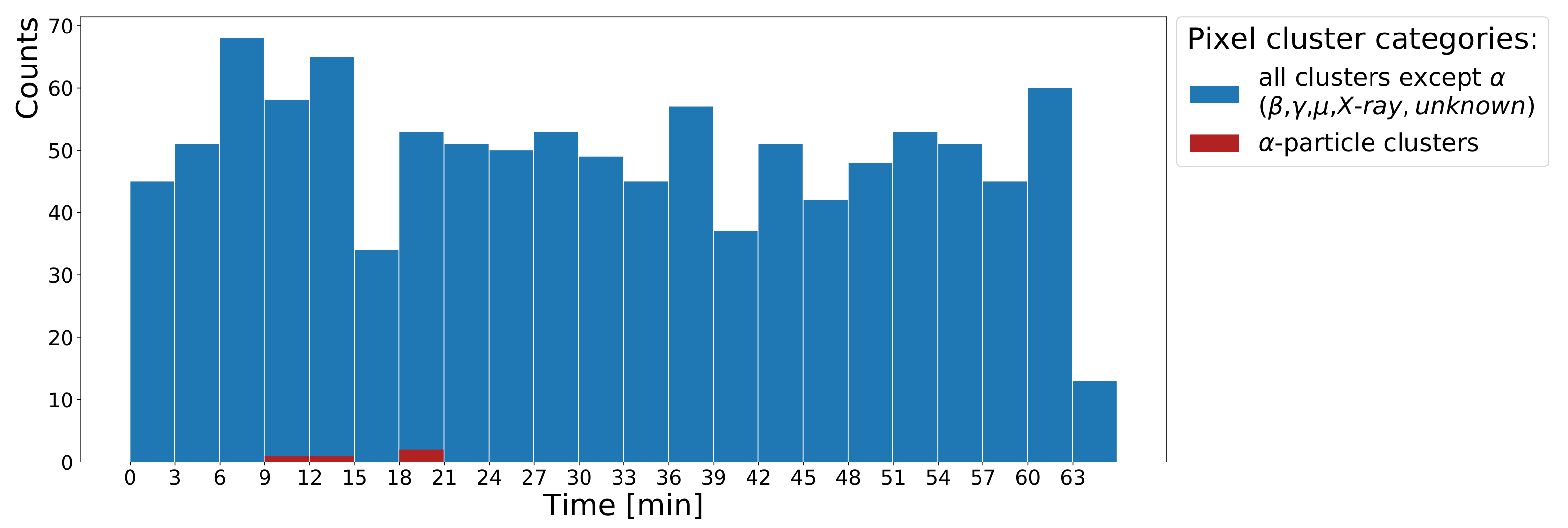
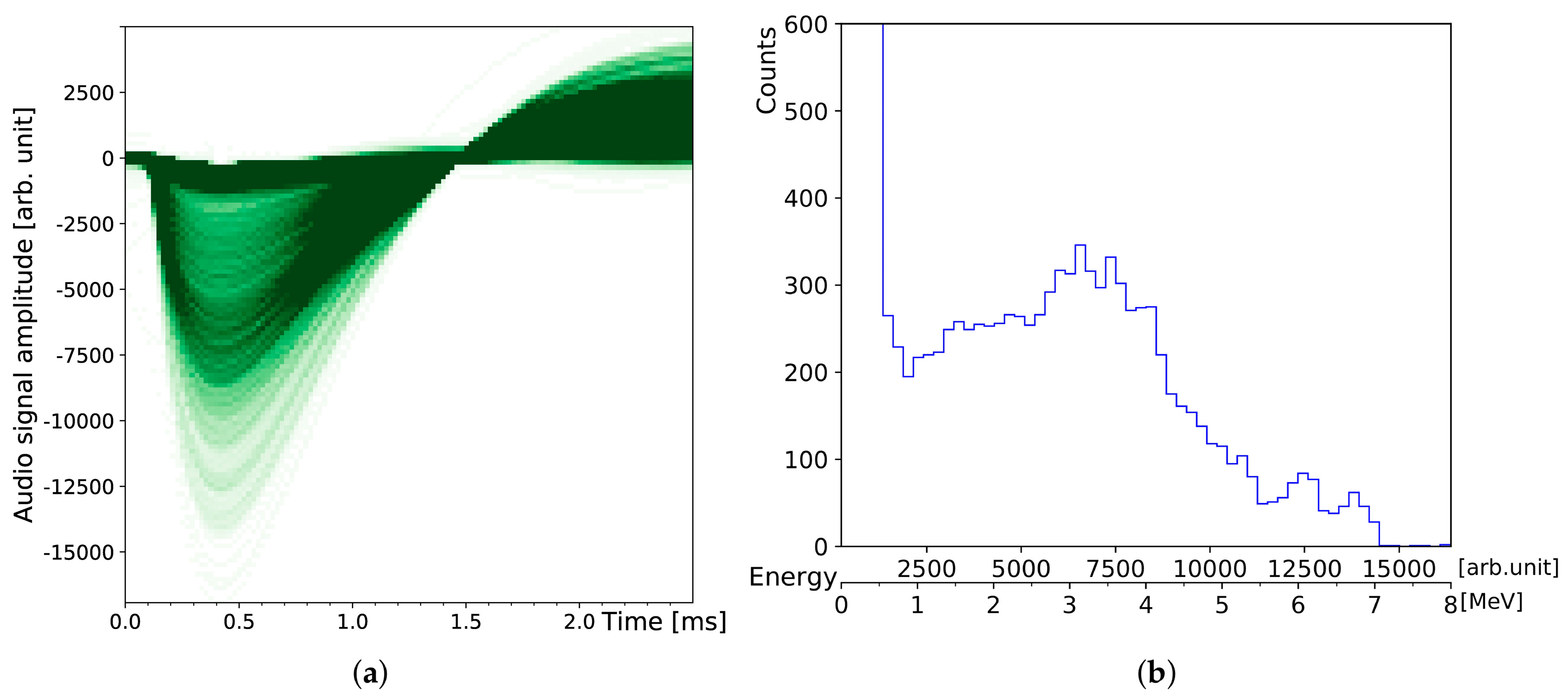
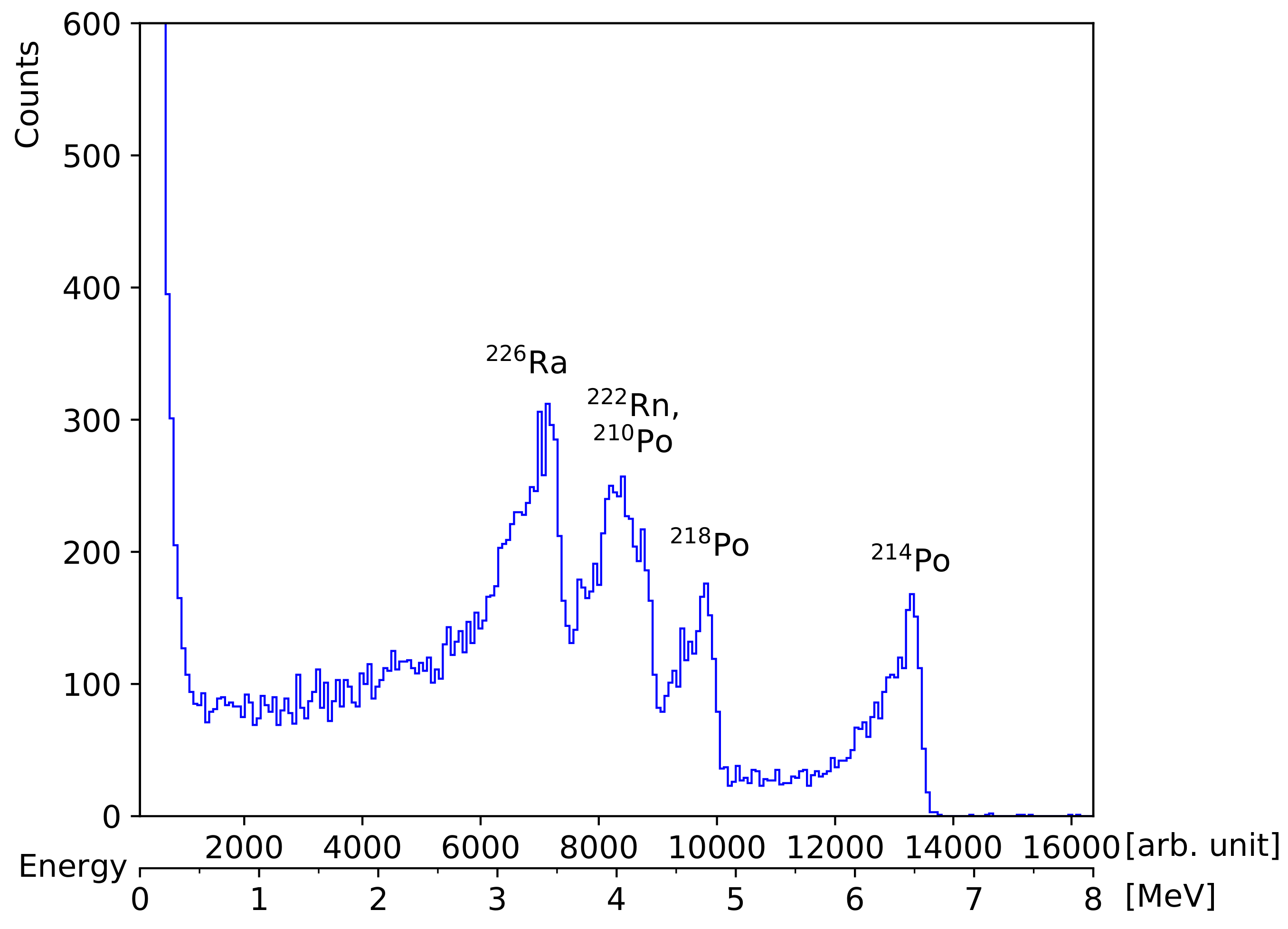
| Isotope | Half-Life | Main Decay | Energies (% Probability) | Progeny | Occurrence in Nature |
|---|---|---|---|---|---|
| 40K | Gy | (%) | MeV | 40Ca | living beings, food, stones |
| 148Gd | y | MeV | 152Dy | - (synthetic) | |
| 214Bi | m | 787 MeV to 1540 MeV | 214Po | aerosols, water, stones | |
| 214Pb | m | 672 MeV, 729 MeV | 214Bi | aerosols, water, stones | |
| 210Po | d | MeV | 206Pb | aerosols, water, stones | |
| 214Po | MeV | 210Pb | aerosols, water, stones | ||
| 218Po | m | MeV | 214Pb | aerosols, water, stones | |
| 222Rn | d | MeV | 218Po | air, water, stones | |
| 226Ra | 1600 y | MeV, MeV | 222Rn | aerosols, water, stones | |
| 239Pu | ky | MeV, MeV, MeV | 235mU | nuclear fallout (synthetic) | |
| 241Am | y | MeV, MeV | 237Np | - (synthetic) | |
| 244Cm | y | MeV, MeV | 240Pu | - (synthetic) |
© 2019 by the authors. Licensee MDPI, Basel, Switzerland. This article is an open access article distributed under the terms and conditions of the Creative Commons Attribution (CC BY) license (http://creativecommons.org/licenses/by/4.0/).
Share and Cite
Keller, O.; Benoit, M.; Müller, A.; Schmeling, S. Smartphone and Tablet-Based Sensing of Environmental Radioactivity: Mobile Low-Cost Measurements for Monitoring, Citizen Science, and Educational Purposes. Sensors 2019, 19, 4264. https://doi.org/10.3390/s19194264
Keller O, Benoit M, Müller A, Schmeling S. Smartphone and Tablet-Based Sensing of Environmental Radioactivity: Mobile Low-Cost Measurements for Monitoring, Citizen Science, and Educational Purposes. Sensors. 2019; 19(19):4264. https://doi.org/10.3390/s19194264
Chicago/Turabian StyleKeller, Oliver, Mathieu Benoit, Andreas Müller, and Sascha Schmeling. 2019. "Smartphone and Tablet-Based Sensing of Environmental Radioactivity: Mobile Low-Cost Measurements for Monitoring, Citizen Science, and Educational Purposes" Sensors 19, no. 19: 4264. https://doi.org/10.3390/s19194264
APA StyleKeller, O., Benoit, M., Müller, A., & Schmeling, S. (2019). Smartphone and Tablet-Based Sensing of Environmental Radioactivity: Mobile Low-Cost Measurements for Monitoring, Citizen Science, and Educational Purposes. Sensors, 19(19), 4264. https://doi.org/10.3390/s19194264




